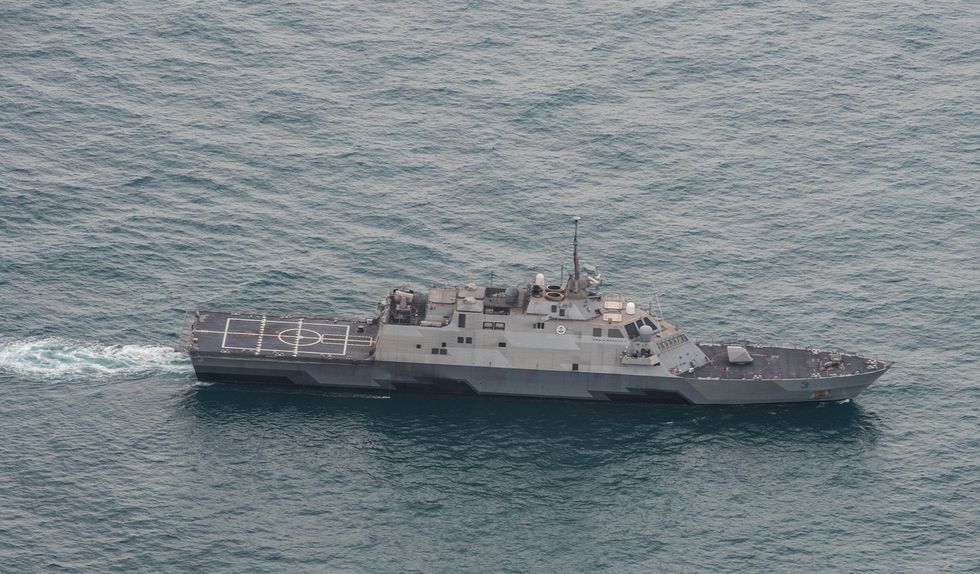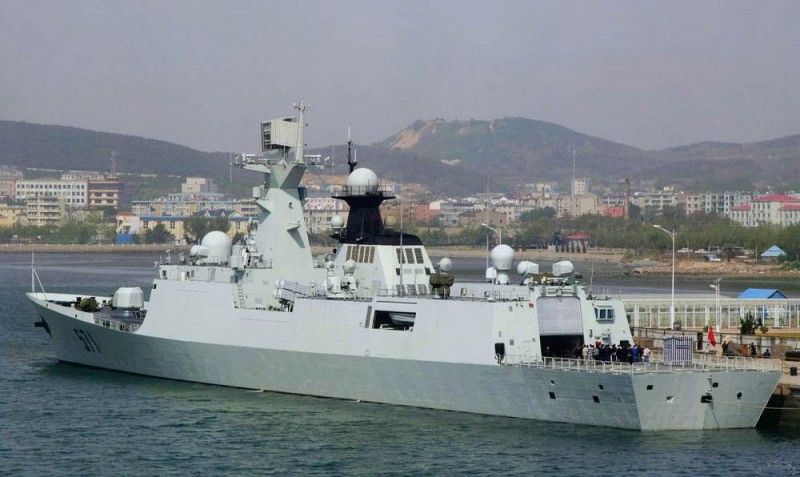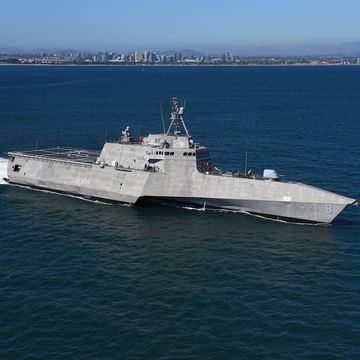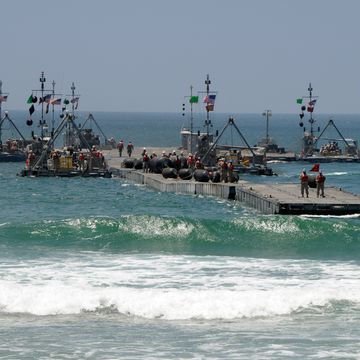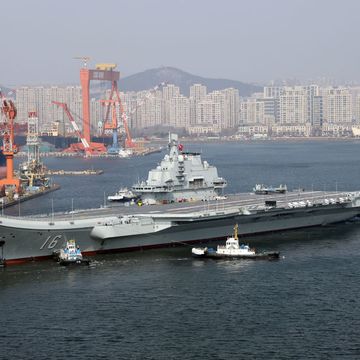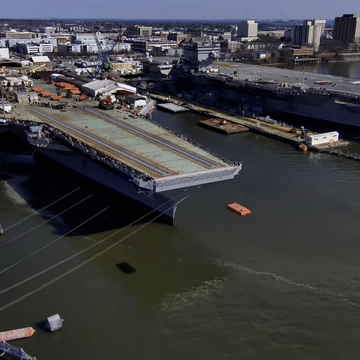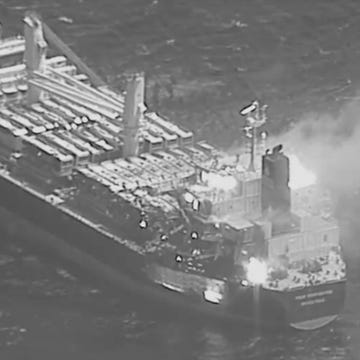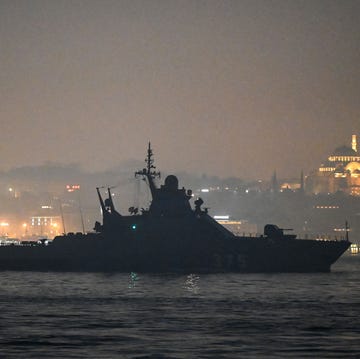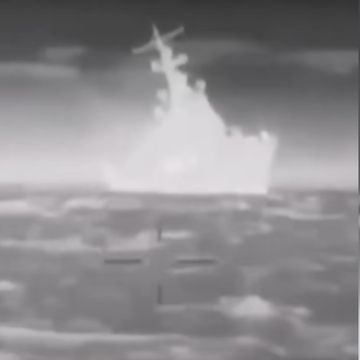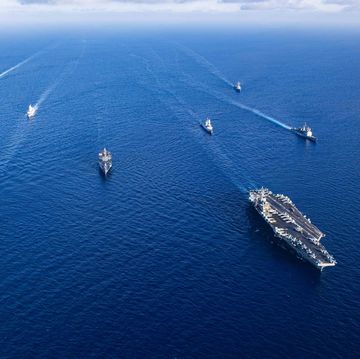This year the U.S. Navy will add nine ships to the battle force as it slowly grows towards a 300-ship fleet. Most likely, these new ships are a sign of things to come as President-elect Donald Trump campaigned on a promise to boost the Navy to 350 ships.
Nine ships are scheduled to be commissioned into the fleet in 2017, meaning they are fully manned, functional, and assigned to a major command. The total includes one aircraft carrier, two destroyers, two nuclear attack submarines, and four littoral combat ships.
The Navy is set to gain the USS Gerald R. Ford, the first in a new class of aircraft carrier. The Ford has the same aircraft capacity as the older Nimitz-class carriers, typically 64 aircraft but capable of embarking up to 90. The carrier introduces a host of new technologies, including a redesigned island, electromagnetic catapult system, new aircraft arresting gear, a new nuclear reactor, and new multifunction and volume search radars.
Ford is the first new aircraft carrier in eight years, following the USS George H.W. Bush in January 2009. Construction began in 2005 but technical problems the Navy blames on a brand-new ship design pushed it behind schedule and over budget. Ford has incurred an estimated $3.2 billion cost in overruns and was originally set to be commissioned in 2014.
Ford's introduction will boost the Navy's carrier force back up to 11 ships. Federal law requires the Navy to keep 11 carriers on active duty at all times, but the retirement of USS Enterprise necessitated a temporary waiver.
The Navy will also add two Arleigh Burke-class guided missile destroyers, the John Finn and Rafael Peralta. The two are the first new destroyers in five years, after a decision was made to cut the Zumwalt-class to three destroyers and build more Burkes instead.
Also joining the fleet are two nuclear-powered attack submarines, the Washington and Colorado. The two Virginia-class submarines each have four torpedo tubes for Mark 48 heavyweight guided torpedoes and twelve vertical launch tubes, each with one Tomahawk land attack cruise missile. Nuclear powered, they can stay on patrol indefinitely, limited only by crew endurance and food supplies.
Finally, the Navy is adding four smaller Littoral Combat Ships: USS Gabrielle Giffords, Little Rock, Omaha, and Sioux City. Designed to introduce a small, flexible surface combatant to the Navy arsenal, the Littoral Combat Ship (LCS) program saw a number of problems in 2016. Last year alone the ships experienced four major failures, including the sidelining of the USS Fort Worth for eight months in Singapore while the Navy repaired the ship's gears.
The Littoral Combat Ships (LCS) were meant to be small, frigate-sized vessels with minimal armament and the ability to quickly swap "mission modules" allowing them to specialize in anti-surface, anti-mine, and anti-submarine operations.
The lack of progress in the LCS program caused Secretary of Defense Ashton Carter to trim the program, cutting the number of ships by 12 and shifting funds to buy Navy aircraft instead. Eventually the Navy will buy 40 LCSs, with the last eight featuring more powerful weapons and classified as Frigates.
The nine new ships don't represent a net gain however. The Navy is set to lose three Los Angeles-class attack submarines, the Buffalo, Dallas, and San Francisco, the salvage ship Grapple, and the fleet tugboat Navajo. The latter, which collided with an undersea mountain in 2005, is set to become a moored training vessel.

Kyle Mizokami is a writer on defense and security issues and has been at Popular Mechanics since 2015. If it involves explosions or projectiles, he's generally in favor of it. Kyle’s articles have appeared at The Daily Beast, U.S. Naval Institute News, The Diplomat, Foreign Policy, Combat Aircraft Monthly, VICE News, and others. He lives in San Francisco.


